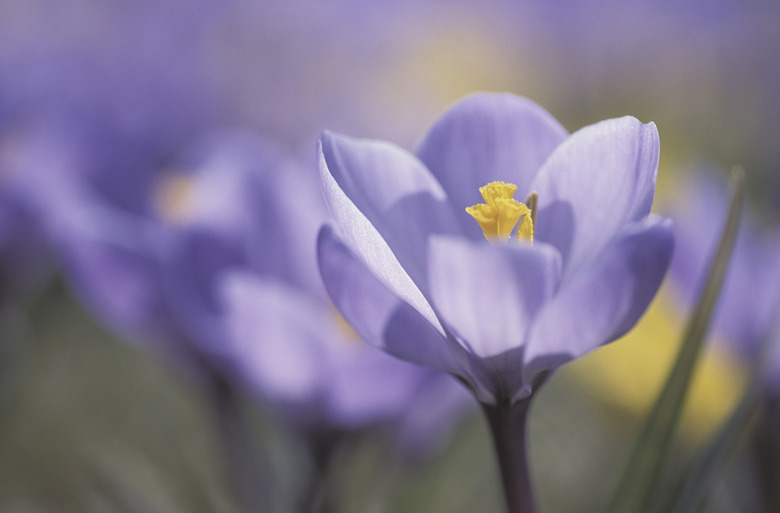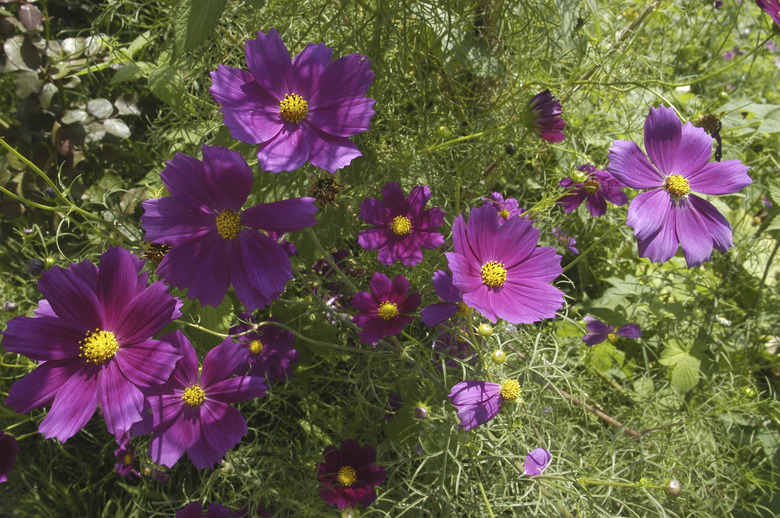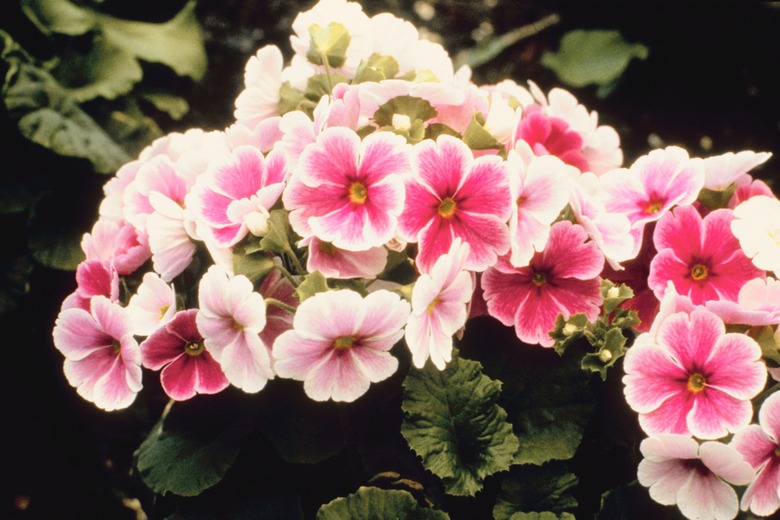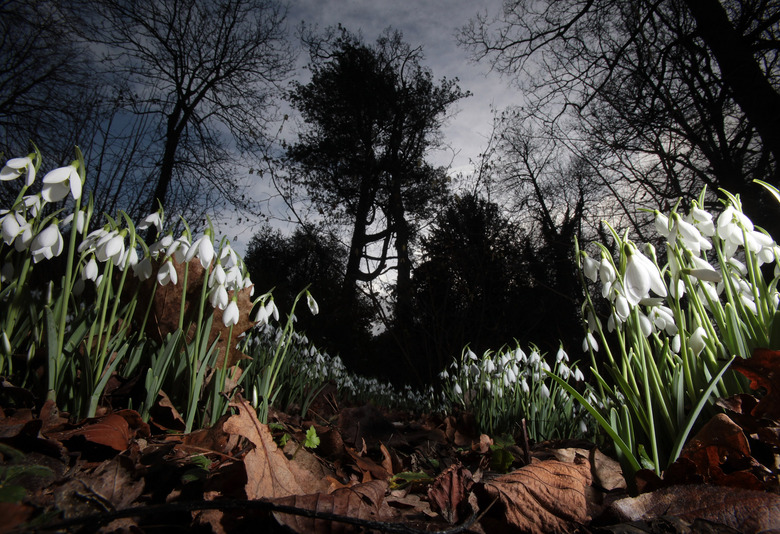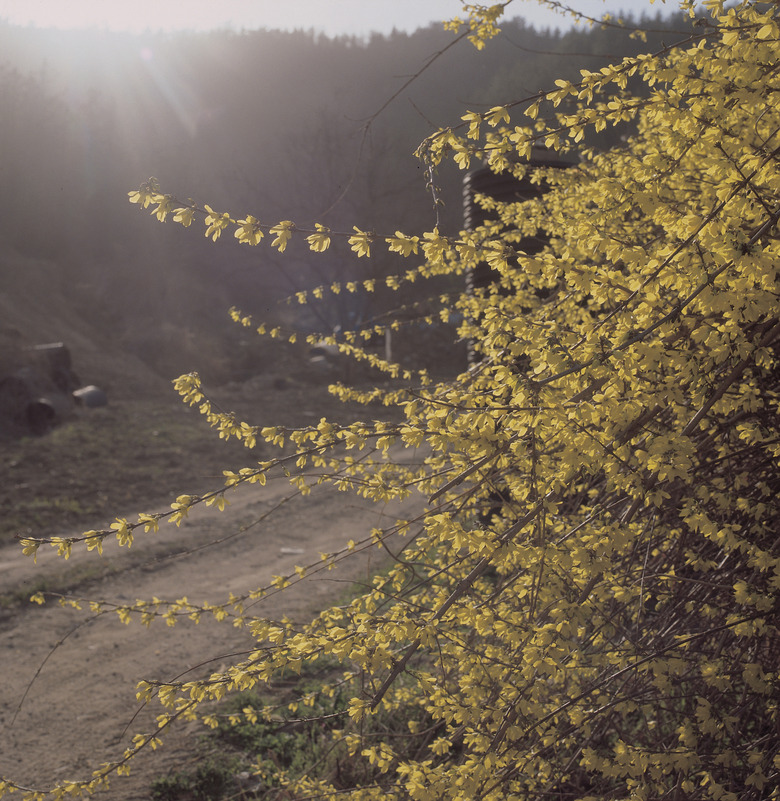Which Flowers Bloom In March?
For gardeners intent on keeping as much color as possible on display in their yards throughout the year, dependable March bloomers or early spring bloomers are indispensable. The best strategy to accomplish this goal is to combine the planting of annuals, perennials, bulbs and shrubs. Climate zones vary widely, so a plant that is a dependable March bloomer in some areas might bring color to your garden either earlier or later.
March Blooming Annuals
Finding annuals or biennials that bloom reliably from the late winter through the early spring is as easy as taking a trip to your local garden center where the plants that work best in your climate zone will be on sale.
The most common flowers in this category include pansies, violas and flowering cabbage or kale. They can be planted as early as the fall in zones 7 and above to give your garden color through winter and into early spring.
Violas are hardy down to zone 3, pansies down to zone 4. Both are found with yellow, gold, orange, purple, violet, red, white flowers. In colder winter areas, look for plants in your local nursery to transplant during those first days of spring. They only grow to about six inches so are best used as spot color.
The color in flowering cabbage or kale comes from its leaves and can be found in a creamy white, green and various shades of purple. The plants are hardy down to zone 3. They will remain colorful as long as the temperature stays above 15 to 20 degrees Fahrenheit. These ornamental plants grow to heights of 10 to 15 inches.
March Blooming Perennials
There are many perennials that will give you color as early as March. If you find these in your local garden center you can be sure they are suitable for your area. When you order plants through a catalog or online, make sure you know your climate zone and if it is suitable for the plants you select. Listed here are some of the more widely planted early blooming perennials, most of which can be planted as low as zones 4 or 5.
Primrose (primula denticulata and others), comes in white, yellow, purple or pink and typically grows to a height of 8 to 12 inches. Bleeding Heart (dicentra spectablis and others) is a distinctive garden plant of varying heights which bears red, pink or white flowers. Sweet Violet (viola odorata) not only blooms early, it is well known for its distinctive scent. Flowers are either blue, purple or pink and grow to 8 inches.
Lenten Rose (helleborus orientalis) deserves special mention. This unusual plant with its delicate, almost translucent, flowers and dark green leathery leaves bears pink, white or purple flowers in the late winter or early spring and grows to 18 inches. It's been reported to poke its way out of snow when it's ready to bloom.
All the early blooming perennials listed here thrive in an area of your garden that is either fully or partially shaded. They like to be kept fairly moist in a soil that drains well.
March Blooming Bulbs
In some warmer climates daffodils or even tulips can bloom as early as March. For reliable early season color, planting bulbs with the word "snow" in their names is a good bet.
Glory of Snow (chionodoxa gigantea), Snow crocus (crocus chrysanthus) and Snowdrop (galanthus nivalis) grow to heights of about 4 to 5 inches. With this selection of bulbs you can accent your yard with blue, pink, white, gold or purple flowers.
While they don't incorporate the word "snow" in their names, these next two bulbs will also perform well in the late winter to early spring. Siberian Squill (scilla sibirica) grows to about 4 inches with either blue or white flowers. Winter Aconite (eranthus hyemalis) will reach about 4 inches and has yellow flowers.
March Blooming Shrubs
Shrubs that can give structure and provide color to your garden in the early spring are very valuable plants. Forsythia (forsythia mandschurica) is the most commonly planted early blooming shrub. Growing to a height of 6 to 8 feet it puts on a spectacular show of yellow flowers and generally signals the arrival of spring. As with all perennials, blooms in colder areas will be somewhat later.
Less frequently seen, and generally an even earlier bloomer than forsythia, is witch hazel (hamamelis x intermedia). It grows to about the same height as forsythia and also has yellow flowers. In addition to its late winter color, witch hazel puts on a good show in the fall when its leaves turn a dark, dramatic red before dropping.
Often seen in more rural areas is flowering quince (chaenomeles speciosa). Common varieties often grow to about 5 feet and provide a spectacular display of red, pink or white flowers for about two weeks in late winter or very early spring.
Other good choices include Korean Spice viburnum (viburnum carlesii), Spicebush (lindera benzoin) and Spring Heath (Erica carnea).
